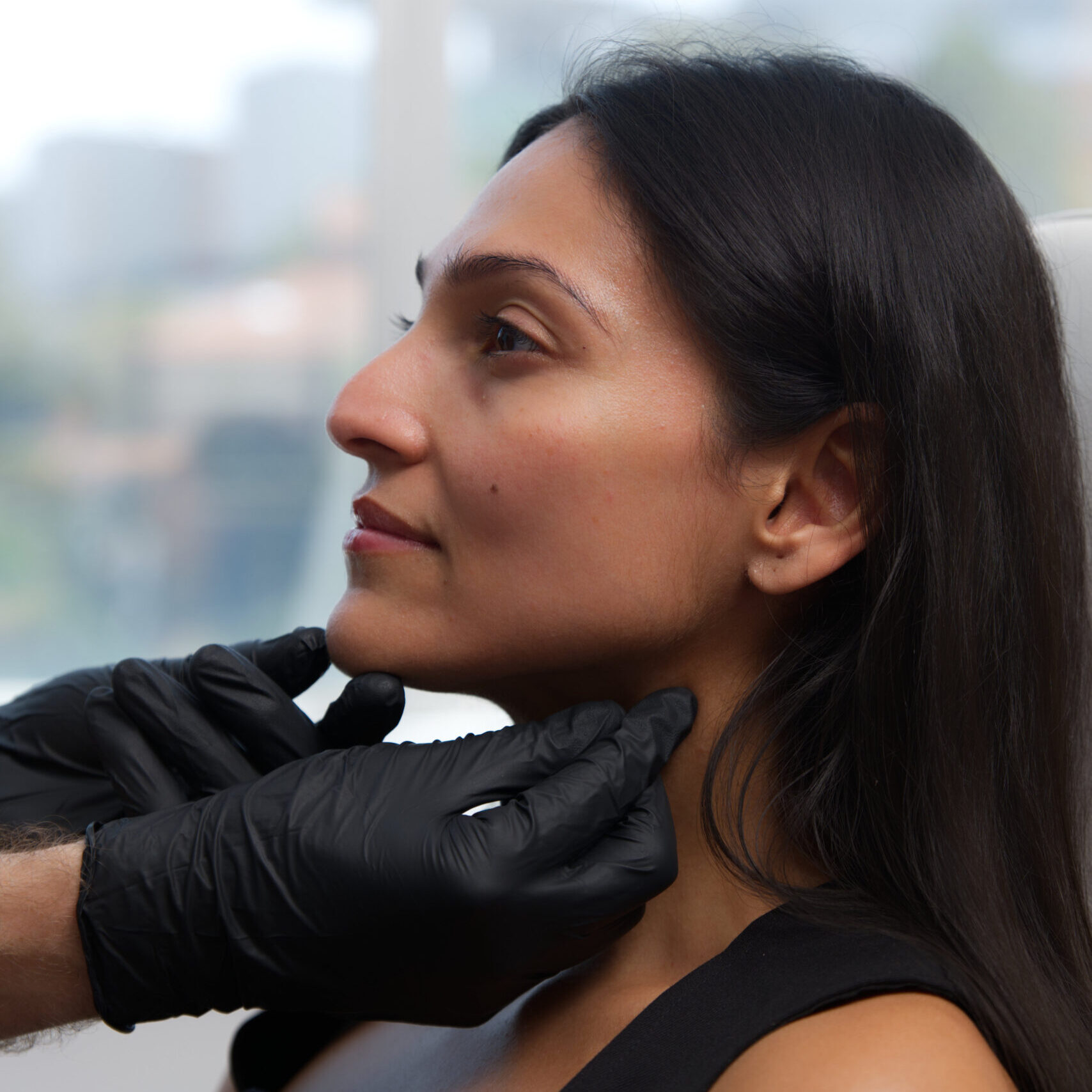Top 10 Questions About the Risks of Non-Surgical Jawline Sculpting
1. What are the most common risks associated with jawline sculpting?
Fillers: These injectable solutions, while generally safe, carry potential risks like:
- Vascular occlusion (blocking blood vessels), infection, and product migration creating lumps or asymmetry. This is far more likely when an inexperienced provider performs the treatment.
- Allergic reactions and granuloma formation may occur, but are rare with high quality fillers.
Jawline slimming botulinum toxin: This shrinks the masseter muscles, for a slimmer jawline.
- There is a risk of a weak smile, which is more common when the treatment is not performed correctly. Fortunately, this issue resolves without any lasting effect.
Thread lifts: This procedure uses absorbable threads to define the jawline by lifting skin. Risks include:
- Improper placement: This can lead to abnormal facial contours.
- Thread breakage: Some threads can snap, causing a loss of result.
- Infections, which will require treatment with antibiotics, and in severe cases, surgical removal.
2. What are the long-term risks of these procedures, and how long do the results typically last?
There are no significant long-term risks of jawline sculpting techniques. As the products used are temporary, once broken down by the body, there is very little chance of any ongoing effects. Dermal fillers are also reversible, meaning if you are to have a delayed reaction, treatments are available.
3. How important is choosing a qualified professional to reduce risks? What qualifications should I look for?
Choosing a qualified professional is essential to ensure your jawline sculpting treatment is performed correctly. Opt for dermatologists or aesthetic doctors with formal training in cosmetic medicine. Qualifications to look for are Cosmetic Fellowships, offered through the Australasian College of Cosmetic Surgery and Medicine, and the Cosmetic Physicians College of Australia.
You should also take note of their clinic. Is it a dedicated space for medical procedures? Many pop-up clinics exist inside gyms, nail salons, and even cafés. Exercise extreme caution with such ‘clinics’, where there is no quality control of hygiene or practice standards.
4. What are some red flags to watch out for that might indicate increased risk?
Be extremely wary of:
- Discounted procedures: Low prices always indicates 2 things: fake products (that are often contaminated with viruses and bacteria, or very inexperienced staff (meaning bad results, and high risks). Don’t think this happens? The TGA has issued many infringement notices to registered nurses illegally importing and using fake injectables.
- Lack of clear qualifications: Verify their credentials and training through official channels like the ACCSM members directory.
- Pressure to proceed: A reputable professional will address your concerns and respect your decision-making process. They will never give you unsolicited advice, keeping the consultation relevant to your concerns.
- Vague answers to your questions: Clarity and transparency are crucial. If they hesitate or avoid answering your questions directly, seek another practitioner.
5. Are there any alternatives to non-surgical jawline sculpting that carry fewer risks?
Facial exercises may offer subtle toning, although results vary and require commitment. They will never achieve a result close to what cosmetic procedures can.
6. Should I disclose all my medical conditions before undergoing non-surgical jawline sculpting?
It is vital to inform your doctor about your medical history before undergoing jawline sculpting. Certain medical conditions may increase the risk of side effects and affect your result.
7. What should I do if I experience any complications after a non-surgical jawline sculpting procedure?
If you experience any symptoms of a side effect you should immediately contact your treating doctor or their clinic. Depending on the issue, you may require a formal assessment and treatment. Many side effects do not resolve on their own, but can be easily treated if addressed quickly.
8. How can I manage my expectations realistically when considering non-surgical jawline sculpting?
It’s essential to understand that jawline sculpting offers subtle to modest enhancements. Focussing on balancing your weaker features and bringing out your strong ones is the way to achieve the best result. A good clinician will know how to set your expectations in regards to the result you can expect.
9. Are the jawline sculpting results seen on social media real?
Social media is rife with clinics photoshopping their before and after results. Strategic angles and different lighting is a commonly used technique to emphasise results. Why? It gets attention, and compensates for their inability to provide a good service. Always look for consistency in angles and lighting. Don’t fall for deceptive techniques that get your hopes up of results that are never achievable.
10. Is it okay to feel nervous or apprehensive about undergoing non-surgical jawline sculpting?
It is normal to feel nervous before having a jawline sculpting treatment. It is also an advantage, because it pushes you to do your research, and think properly about whether it is the right option for you. Ensure your clinician helps alleviate your nerves by providing comprehensive and transparent advice.

